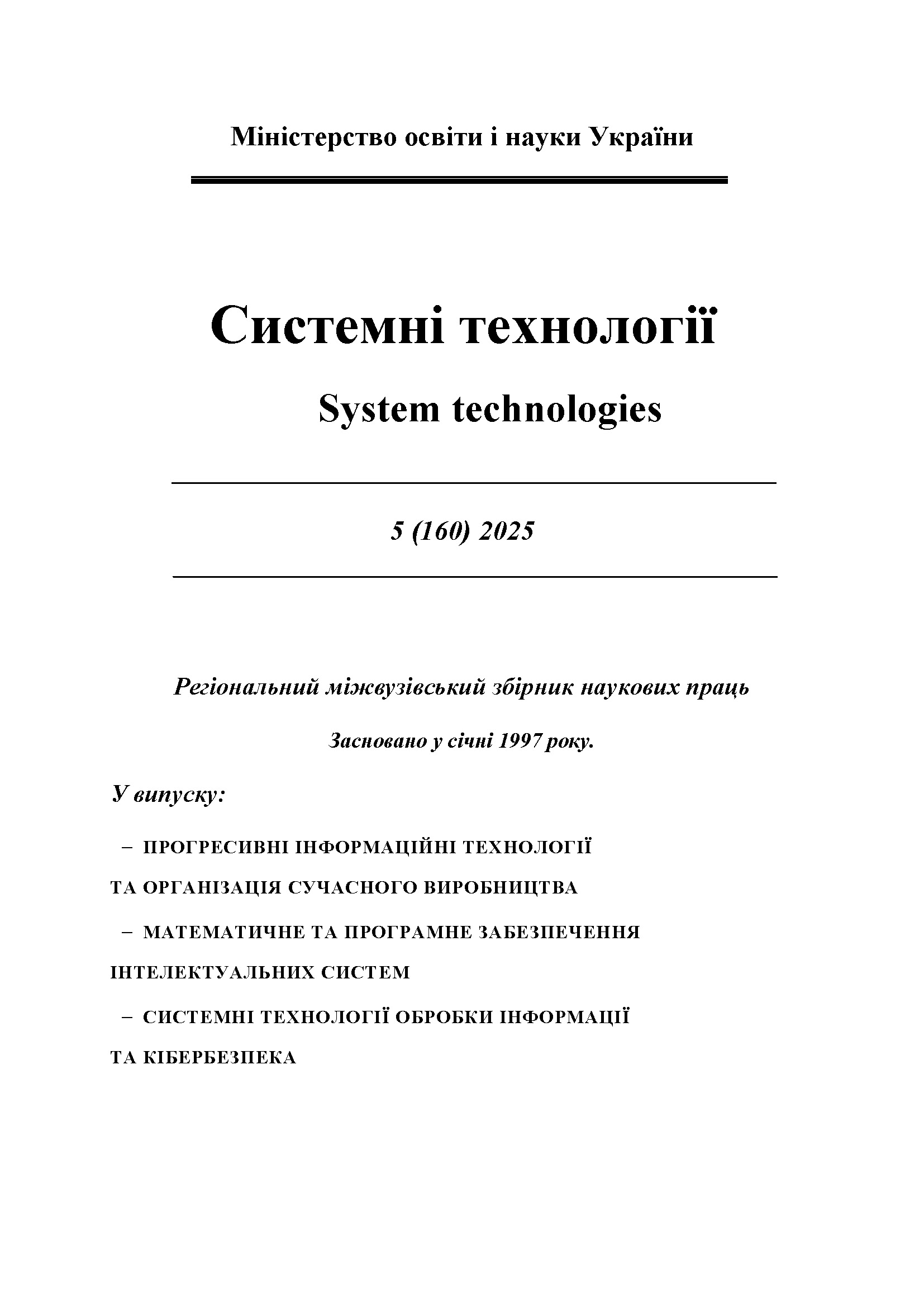Analysis of existing architectures for the development of an information system of air quality assessment
DOI:
https://doi.org/10.34185/1562-9945-5-160-2025-01Keywords:
information system, forecasting of atmospheric processes, meteorological data processing, neural networks, UNet architecture, FourCastNet modelAbstract
The paper focuses on the development of information technology for weather modeling and forecasting using modern deep learning methods. The relevance of the topic is driven by growing climate risks, an increase in the frequency of extreme weather events, and the need for highly accurate meteorological analytics for the agricultural sector, transportation, en-ergy, and civil defense systems. FourCastNet, a modern architecture based on deep neural networks and transformers that combines high performance with the ability to process large-scale historical meteorological data, was chosen as the main model for generating forecasts. FourCastNet was trained on data from global atmospheric analysis, which ensured forecast-ing accuracy at the same level with traditional numerical models at a much lower computa-tional load.
To form the initial forecasting conditions, data from the GFS global numerical model in combination with the GDAS assimilation system were used. These sources provide weather data with a resolution of approximately 0.25° × 0.25° (~28 km), which made it possible to overcome the limitations of ERA5-type models (about 31 km) and make the system suitable for real-time use. In order to adapt the global forecast to a specific geographic location, a spatial interpolation approach was implemented using a modified UNet architecture. This model re-fines meteorological parameters based on data from local weather stations, thus improving the accuracy of forecasts at specific locations.
The article describes in detail the architecture of the information system, which includes modules for processing input data, forecasting models, an interpolation system, and an end-user interface. The proposed solution makes it possible to obtain highly accurate forecasts in an online mode, which is especially important for decision-making in critical industries. Par-ticular attention is paid to the possibility of integrating the system into mobile applications and real-time notification platforms.
References
Lang S., Alexe M., Chantry M., Dramsch J. S., Pinault F., Raoult B. et al. (2024). AIFS - ECMWF’s data-driven forecasting system. DOI: https://doi.org/10.48550/arxiv.2406.01465
Waqas M., Humphries U. W., Chueasa B., Wangwongchai A. (2024). Artificial intelli-gence and numerical weather prediction models: A technical survey, Natural Hazards Re-search, DOI: https://doi.org/10.1016/j.nhres.2024.11.004
Shabnam Kumari, P Muthulakshmi. (2023). Weather Prediction Using Futuristic Tech-nologies: From Industry's Perspective. In Proceedings of the 2023 Fifteenth International Conference on Contemporary Computing (IC3-2023). Association for Computing Machinery, New York, NY, USA, P. 245–251. DOI: https://doi.org/10.1145/3607947.3607994
Pathak J., Subramanian S., Harrington P., Raja S., Chattopadhyay А., Mardani М., et al. (2022) FourCastNet: A Global Data-driven Weather Model using Deep Learning, DOI: https://doi.org/10.48550/arXiv.2202.11214
NVIDIA. FourCastNet – Forecasting Global Weather with Neural Operators [NVIDIA Documentation.] Retrieved from
Rasp S., Dueben P. D., Scher S., Weyn J. A., Mouatadid S., Thuerey N. (2020). Weather-Bench: A benchmark data set for data-driven weather forecasting. Journal of Advances in Modeling Earth Systems, 12, DOI: https://doi.org/10.1029/2020MS002203
National Center for Atmospheric Research. ERA5 Atmospheric Reanalysis [Climate Data Guide] Retrieved from https://climatedataguide.ucar.edu/climate-data/era5-atmospheric-reanalysis.
Amazon Web Services. NOAA Global Forecast System (GFS) [Registry of Open Data on AWS] Retrieved from https://registry.opendata.aws/noaa-gfs-bdp-pds/.
Wang, J. (2024) Data interpolation methods with the UNet-based model for weather fore-cast. International Journal of Data Science and Analytics, DOI: https://doi.org/10.1007/s41060-024-00611-z
Molodets, B., Hnatushenko Volodymyr, Boldyriev D., Bulana T. Information System of Air Quality Assessment Based of Ground Stations and Meteorological Data Monitoring. CEUR Workshop Intelligent Information Technologies & Systems of Information Security (In-telITSIS 2023). 2023.Vol. 3373, P. 206–216. Mode of access: https://ceur-ws.org/Vol-3373/
Downloads
Published
Issue
Section
License
Copyright (c) 2025 System technologies

This work is licensed under a Creative Commons Attribution 4.0 International License.















